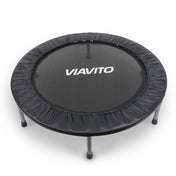Choosing the right squash racket can make a huge difference—improving control, power, and overall feel on court. Whether you’re a beginner learning the ropes or a seasoned player ready to level up, knowing the types of squash rackets and their impact on your play will help you buy with confidence.
In this buying guide, we break down the key features, explore the pros and cons of different racket styles, and help you choose a racket that fits your game, goals, and budget.
Types of Squash Rackets: What to Look For
The two biggest decisions when choosing a squash racket are:
- Racket Balance
- Head Shape
Each impacts your performance in different ways—here’s how to decide what suits you best.
Squash Racket Balance Types
Head-Light Rackets
🔹 Best for: Skilled players, fast movement, front-court control
💪 Benefits: More manoeuvrable, faster swing, better volleying
✅ Ideal for players who rely on finesse and reflexes
Balanced (Even) Rackets
🔹 Best for: All-round players, improvers, and versatile gameplay
💪 Benefits: A balance of control and power
✅ Great for players still developing their style
Head-Heavy Rackets
🔹 Best for: Power players, rear-court control
💪 Benefits: Generates more power with less effort
✅ Suits players who want to dominate rallies from the back of the court
Pro Tip: A “balanced” racket typically has its centre of gravity at 340mm (halfway up a 68cm racket). Less = head light. More = head heavy.
Squash Racket Head Shapes
Open Throat Rackets
🔹 Best for: Beginners and control-focused players
💪 Benefits: Larger sweet spot = easier contact, more control
✅ Perfect for short-game strategy and learning clean shot technique
Closed Throat (Tear Drop) Rackets
🔹 Best for: Intermediate/advanced players who play from the back
💪 Benefits: Smaller sweet spot but more power when struck well
✅ Ideal for hard hitters with good timing
Hybrid Rackets
🔹 Best for: Players who want a middle ground
💪 Benefits: Mixes some control with added power potential
✅ May suit improvers who want to try both styles
Other Key Features to Consider
Frame Weight
- Heavy (140g+): More power but slower swings
- Medium (125–140g): Balanced performance
- Light (<125g): Fast movement, good for volleying
✅ Lighter rackets = quicker reflexes
✅ Heavier rackets = more powerful shots with less effort
Racket Beam (Frame Thickness)
- Narrow Beam (<19mm): Better aerodynamics, suits fast players
- Thick Beam (>19mm): More durability and power potential
String Pattern & Tension
- Factory Default: ~26lbs tension is fine for most players
- Thinner Strings (18 gauge): More feel, less durability
- Thicker Strings (16–17 gauge): Last longer, less touch
✅ Restringing can make a big difference for experienced players
Matching Your Racket to Skill Level
Beginners
- Open throat
- Balanced or head-heavy
- Medium weight (130g–140g)
- Affordable price point
✅ Focus on control, comfort, and confidence
Intermediate Players
- Try both head shapes to refine your style
- Go for a mid-weight frame
- Experiment with string tension and beams
✅ Aim for a racket that reflects your playing style
Advanced Players
- Choose head shape and balance based on strategy
- Lighter rackets allow faster responses
- Consider custom restringing
✅ Look for equipment that complements your refined technique
Junior Players
- Lightweight frame
- Balanced or head-heavy for support
- Open throat for a forgiving sweet spot
✅ Keep it fun and easy to handle
Budget & Warranty Considerations
Set a Realistic Budget
- Entry Level (£40–£80): Solid for casual use
- Mid-Range (£80–£150): Great for regular club players
- Premium (£150+): For serious competitors
✅ Don’t overspend if you’re just starting out
✅ But do invest if you train or compete regularly
Warranty
- Always check if the racket includes a manufacturer warranty
- Look for coverage on string breakage, frame cracks, and construction faults
✅ A solid warranty offers peace of mind for committed players
Squash Racket Maintenance Tips
✔️ Get it restrung by a pro every 6–12 months (more often if you play regularly)
✔️ Store it in a protective case
✔️ Avoid extreme heat or cold—this can warp the frame
✔️ Wipe down after use to prevent grip wear
✅ Proper care keeps your racket feeling fresh and responsive
Final Thoughts
The right squash racket isn’t just about power or price—it’s about finding a comfortable, responsive tool that complements your natural playing style.
Whether you’re smashing from the back wall or playing delicate drop shots up front, your choice of racket can elevate your performance.
👉 Explore Sweatband’s full range of squash rackets and find your match today. Shop Now

